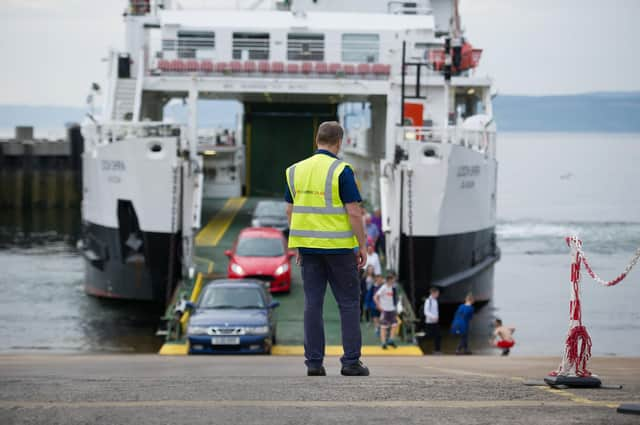Scotland's ferry fiasco gets more absurd the more you look into it. We need an inquiry – Kenny MacAskill MP


That’s at the heart of difficulties that have arisen and the resulting delays.
It’s not just why, when you’re hosting COP26 and trying to push towards net-zero carbon emissions, you’d use such an environmentally damaging system. More critical is that the system’s not really used on ships the size of these two vessels. Instead, it’s usually applied to larger ones; with ones this size, other fuels such as either hydrogen or batteries are more often combined with marine diesel.
Advertisement
Hide AdAdvertisement
Hide AdCompounding the design complexity, there’s the lack of infrastructure to provide for LNG. I asked Caledonian Maritime Assets Ltd (CMAL) which procures the vessels “what consideration was given to onshore supply systems, what was in situ at the time of requisition and what the situation is now for LNG?”
Pretty basic stuff you’d think. If you’re putting in an unusual fuel system, you’d better ensure there’s easy access to it, especially when you’re sailing to remote communities in the Clyde and Hebrides.
But the answer was: “At the time, the only load-out facility in the UK for trucks was in the Isle of Grain [in Kent]. There were three projects looking at the bulk storage in Scotland, two on the East Coast and one on the West Coast – so far none of these have been built out.”
So, the only site for supplying LNG isn’t even in Scotland, let alone the Hebrides or the Clyde, but at the mouth of the River Thames and it remains that way. What an absurdity, who thought up that?
When I asked CalMac, which operates the ships, they directed me to CMAL who in turn responded that it was CalMac, a claim echoed by the Scottish Government. But when the Scottish Parliament were carrying out an inquiry, Jim McColl, the entrepreneur in charge of Ferguson’s at the time, made it clear that CMAL called the shots stating: “We too have heard from CalMac that it does not get what it wants from CMAL but gets told what it is going to get.”
More damningly, Commodore Luke Van Beek, a Dutch maritime expert appointed by the Scottish Government, said: “I had a meeting with the previous chief executive of CalMac, during which he told me that the two ships, 801 and 802, were not the ships that CalMac wanted. In particular CalMac did not want LNG fuel.”
The absurdity of ships fuelled in a manner that the operators did not want and where there’s not – then or now – a supply system’s the crux of the issue. The contract was tendered too early and whilst lacking in specification. Blame for that rests with CMAL and the Scottish government for not intervening.
It’s suggested CMAL was driven by government pressure. Both have some explaining to do, which is why an inquiry’s needed.
Kenny MacAskill is Alba Party MP for East Lothian
A message from the Editor:
Thank you for reading this article. We're more reliant on your support than ever as the shift in consumer habits brought about by coronavirus impacts our advertisers.
If you haven't already, please consider supporting our trusted, fact-checked journalism by taking out a digital subscription.
Comments
Want to join the conversation? Please or to comment on this article.
